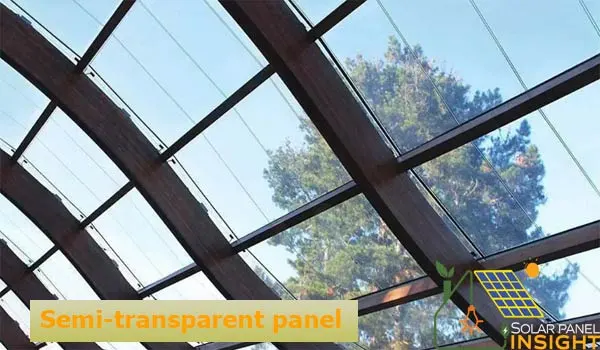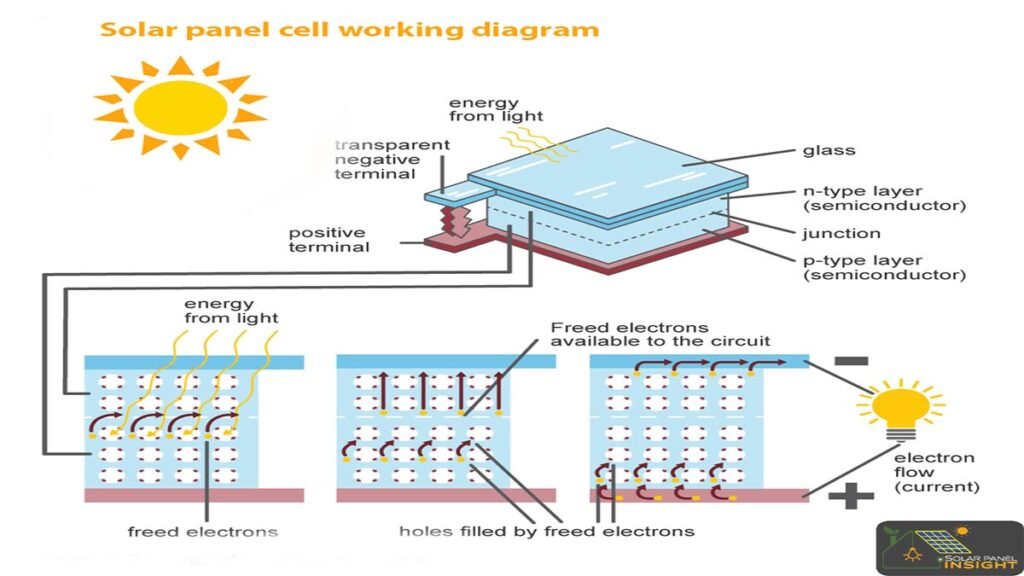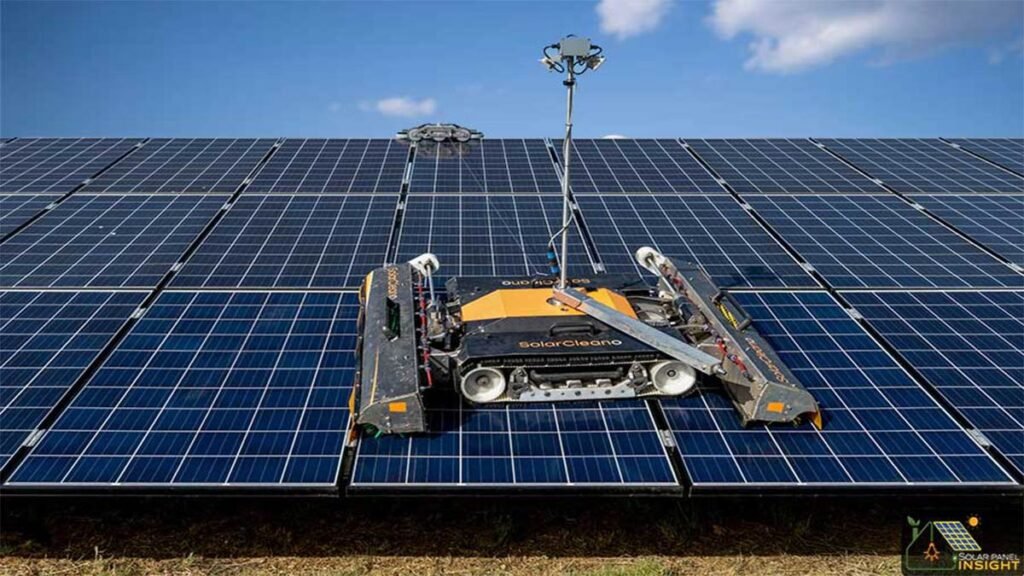
Imagine living in a world where the windows in your house or perhaps the glass façade of a skyscraper generate clean, renewable energy. Your smartphone’s screen may function as a solar panel, absorbing and storing energy to replace wall and wireless chargers. Transparent, translucent solar panels are the way of the future, despite their seeming science fantasy nature. This state-of-the-art technology is changing the renewable energy sector. This essay will examine transparent solar panels, discuss their mechanisms, evaluate their advantages and disadvantages, and visualize their possible uses in our everyday existence.
Discovery
Over a decade ago, the idea of a translucent luminous solar concentrator may have seemed strange. However, in August 2014, researchers from Michigan State University unveiled this ground-breaking technology to the world. In short, it is a solid, transparent substance that may mimic the functioning of a solar panel. Transparent solar panels are still being developed and not easily available to the customers in the market while normal or conventional panels are easily available in the market.
Transparent panel is commonly referred to as photovoltaic glass. Some prefer to refer to it as “solar glass” due to its simplicity. However, all of these materials serve the same purpose, although with differing levels of transparency. Transparent solar panels have the potential to revolutionize the way we address cost and environmental concerns, offering an effective and innovative solution.
What Are Transparent Solar Panels?
Transparent solar panels, often referred to as invisible, clear, and see-through solar panels, are advanced renewable technology designed to integrate solar electricity into everyday surfaces and structures such as windows and vehicles. They utilize highly transparent solar cells.
Transparent solar panels can be seamlessly integrated into existing architecture without significantly altering its visual aesthetics. Hence, these panels can serve as a valuable enhancement to contemporary infrastructures.
Their slim, lightweight shape gives them a distinct advantage over bulky conventional panels. Considering this advantage, are they worthwhile in terms of energy efficiency?

How do transparent solar panel cells work?
Transparent cells absorb light from the invisible ultraviolet (UV) spectrum while permitting sunlight to be transmitted throughout the visible wavelength.
Two varieties of transparent photovoltaic cells exist:
i. Fully Transparent Solar panels
In 2014, Michigan State University researchers developed a transparent luminescent solar concentrator (TLSC) made of an organic salt that can absorb ultraviolet and infrared light while allowing visible light to pass through without obstruction. In 2020, solar glass was manufactured entirely transparently. The cells exhibit a transparency level of 86% and have the potential to achieve a conversion efficiency rate of up to 10%. However, due to their organic composition, they undergo rapid degradation.
ii. Semi-transparent Solar Panels
Heliatek, a German solar equipment business, has created semi-transparent PV panels. These panels have a transparency level of 60% and a conversion efficiency rate of approximately 7.2%. Semi-transparent cells employ a skinny layer of semiconductor material sandwiched between two glass sheets that are only a few microns thick. Their lower transparency rate restricts the amount of solar heat entering a building.
Semi-transparent solar cells can be produced by a variety of semiconductor technologies, such as organic, dye-sensitized, kesterite, chalcopyrite, cadmium-telluride (CdTe), amorphous silicon, and perovskites. One of the most exciting new developments in photovoltaic technology is perovskites.
What are Perovskites?
Perovskites are compound substances with the same crystal structure as calcium titanium oxide. Perovskite structures can be formed by combining multiple elements, allowing manufacturers to create crystals with diverse physical, optical, and electrical properties based on their intended use.
Perovskite technology in solar PV cells provides increased efficiency due to their broader range of light absorption and the use of multi-junction cells. In addition, they possess a lower weight, more flexibility, reduced cost, and simplified construction compared to previous technologies like silicon. This is due to their ability to be manufactured at lower temperatures and placed on plastic substrates.
Transparent cells based on perovskite can be produced using two methods: one involves applying a thin layer of perovskite crystals and adjusting the thickness of the film by altering the concentration of the solution, while the other method is partially covering the perovskite and leaving certain areas unfilled. The transparency of cells can be modified by altering the band gap, which involves manipulating the bromide-to-iodide ratio to create a gap in the absorption of visible light.
Although perovskites are the most promising among the emerging materials aiming to replace silicon, the durability of perovskite-based cells has yet to reach the same level. Companies like Oxford PV are employing a technique where they stack perovskite crystals on silicon in tandem devices, resulting in a superior conversion rate and leveraging the benefits of both technologies.
Advantages and Disadvantages of Transparent Solar Panels?
Discover the advantages and disadvantages of utilizing transparent panels:
Advantages of transparent panels
In addition to producing clean energy that reduces carbon emissions, transparent solar panels have several benefits:
i. Transparent panels can easily be integrated into pre-existing structures such as windows and doors, eliminating the requirement for significant additional space when incorporating them into your property or building.
In addition, the development of exceptionally transparent solar panels, beyond the existing market offerings, would enable the installation of solar panels as replacements for glass windows, resulting in the creation of solar windows.
Transparent panels have the potential to enable the construction of skyscrapers that rely on solar electricity in the future.
ii. This product is characterized by its low weight and simple installation process.
Unlike the usual, non-transparent solar panels, transparent solar panels have a sleek and slim form. This characteristic renders them highly portable and facilitates their installation in various locales.
Additionally, they can be mounted on automobiles, watercraft, and compact storage buildings.
iii. Integrating translucent panels into your glass windows or roofs allows natural light to enter. This can reduce the amount of illumination used during the day, enabling you to economize on electricity expenses.
iv. Transparent panels have a low manufacturing cost, which makes them more affordable than conventional solar panels.
Drawbacks or Disadvantages of transparent panels
Some of the disadvantages of transparent solar panels are:
i. An essential drawback of transparent panels is their low power-generating efficiency. Determine the reason:
Regrettably, the affordability and user-friendliness are accompanied by a drawback. Transparent solar cells have a lower efficiency, often around 10%, compared to normal photovoltaic solar cells, which can reach up to 25% efficiency. This implies that transparent solar cells can capture and convert less energy than conventional solar panels.
ii. Due to organic chemicals, transparent panels may experience more rapid degradation than silicon semiconductors.
iii. Due to their novelty, transparent panels are subject to experimentation and study to enhance efficiency. Consequently, unlike regular panels, they are not very prevalent, although their utilization will grow as technology advances.
Transparent vs conventional solar panels
Transparent solar panels offer cost and installation advantages, but their application is restricted to small-scale constructions. While it is possible to integrate solar panels into buildings, this is only feasible for traditional structures with glass windows or sunroofs that may be used as space for the panels.
Regarding installation and maintenance, conventional solar panels require a designated area and expert installation. However, classic solar cells are more efficient for residential purposes.
Conventional solar panels are better than transparent solar panels. This is because the efficiency of electricity production of conventional solar panels is three times high as compared to the transparent solar panels.
Considering this fact, it is advisable to place your trust solely in industry leaders regarding solar panel installations, whether for residential or commercial purposes. At ESE, you will not only benefit from up to a 70% reduction in energy bills and the use of renewable energy, but you will also receive a 15-year maintenance plan at no cost, along with a long-lasting warranty. Simultaneously, you can obtain the most advantageous agreement with Price Match and 0% VAT installations.
Transparent Solar panels price
Their dimensions determine the panels’ cost and vary according to the installed type. Partially or semi-transparent solar panels are significantly more cost-effective to manufacture than totally transparent panels, which are primarily in the experimental stage. Transparent panels offer a cost-effective installation option compared to regular PV panels. This is because PV-coated window glass may be added to windows with minimal additional expenses.
The mean cost for semi-transparent photovoltaic (PV) windows is approximately $80 per square meter, in contrast to approximately $400 for fully transparent windows. The average price range for standard double-pane windows is $80-150 per square meter, whereas the cost of classic solar panels varies between $40-200 per square meter, depending on the specific model. Semi-transparent windows become cost-competitive by integrating two functionalities into a single product.
What are conventional solar panel prices in Pakistan?Transparent Solar Panels Applications in Future
Did you know that the United States possesses approximately 5-7 billion square meters of glass surface? Solar glass technology offers limitless possibilities for utilization. Therefore, a wide range of surfaces, including vehicle windshields and sunroofs, smartphone screens, building curtain walls, and canopies, have the potential to be converted into solar power generators. By integrating this cutting-edge solar panel precise technology into the glass utilized in skyscrapers, there exists a tremendous potential to produce a substantial quantity of solar electric energy, owing to the extensive array of vertical surfaces seen on tall structures.
One additional benefit of transparent solar panels is that the angle of sunlight hitting them is less critical compared to conventional solar panels. This enhances their versatility and efficiency in harnessing solar energy. The increasing prevalence and acceptance of transparent solar panels offer limitless potential for their utilization, creating new opportunities to capture solar energy and promote an environmentally friendly and sustainable future.
Do you want to learn more about future advancements in solar energy? Click hereConclusion
Transparent solar panels, also known as photovoltaic glass, are a renewable technology that integrates solar electricity into everyday surfaces and structures. They employ highly transparent solar cells, which enable the transmission of sunlight across the visible wavelength. Various semiconductor technologies, such as perovskites, can produce semi-transparent solar cells, offering increased efficiency due to their broader range of light absorption and multi-junction cells. Transparent solar panels, although not widely used, are becoming more cost-effective for small-scale construction and residential purposes.



Hurray, this is just the right information that I needed.
Thanks for your interest. We update information about green sustainable energy on daily basis, so please keep visiting solarpanelinsight.com.
Hurray, this is just the right information that I needed.